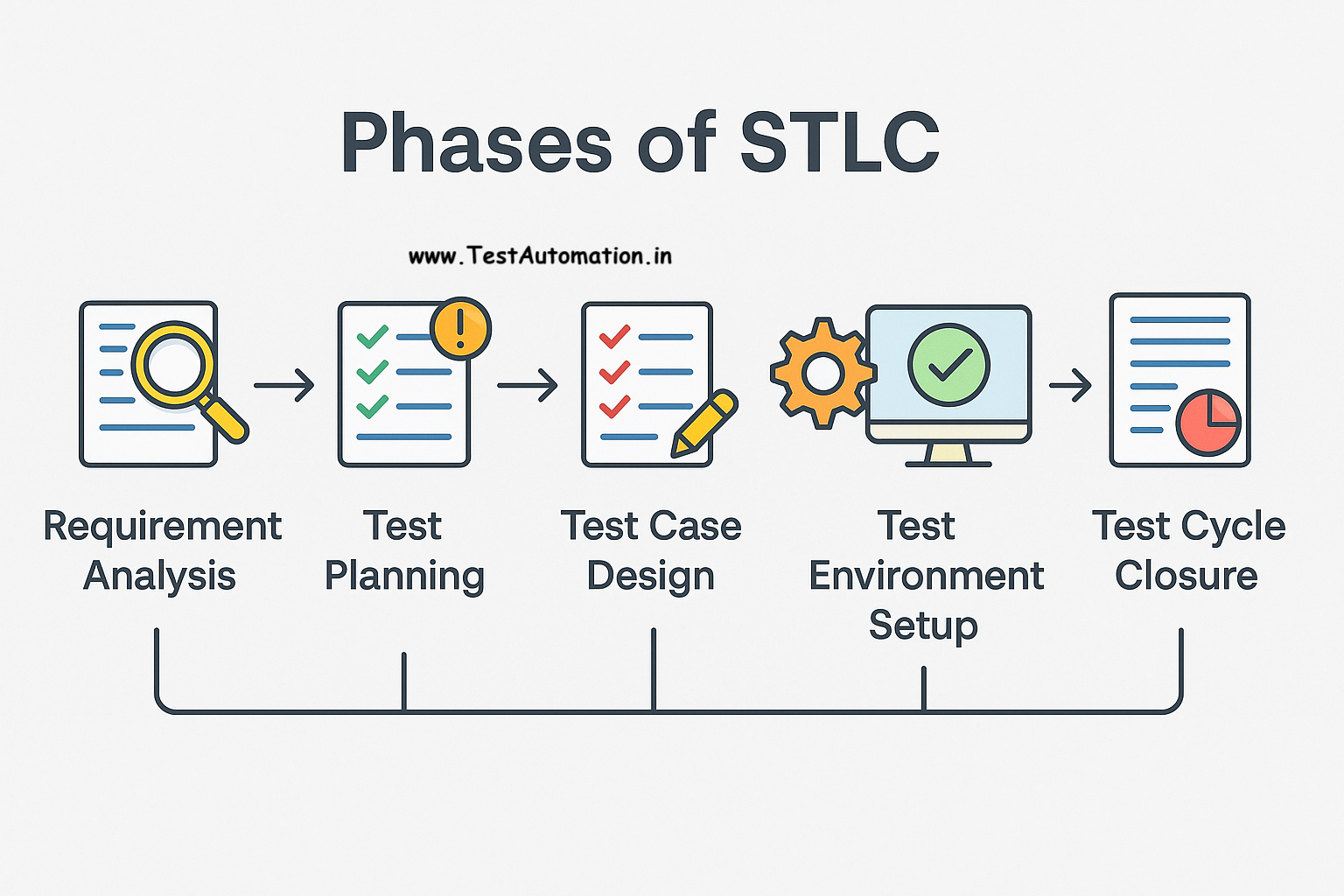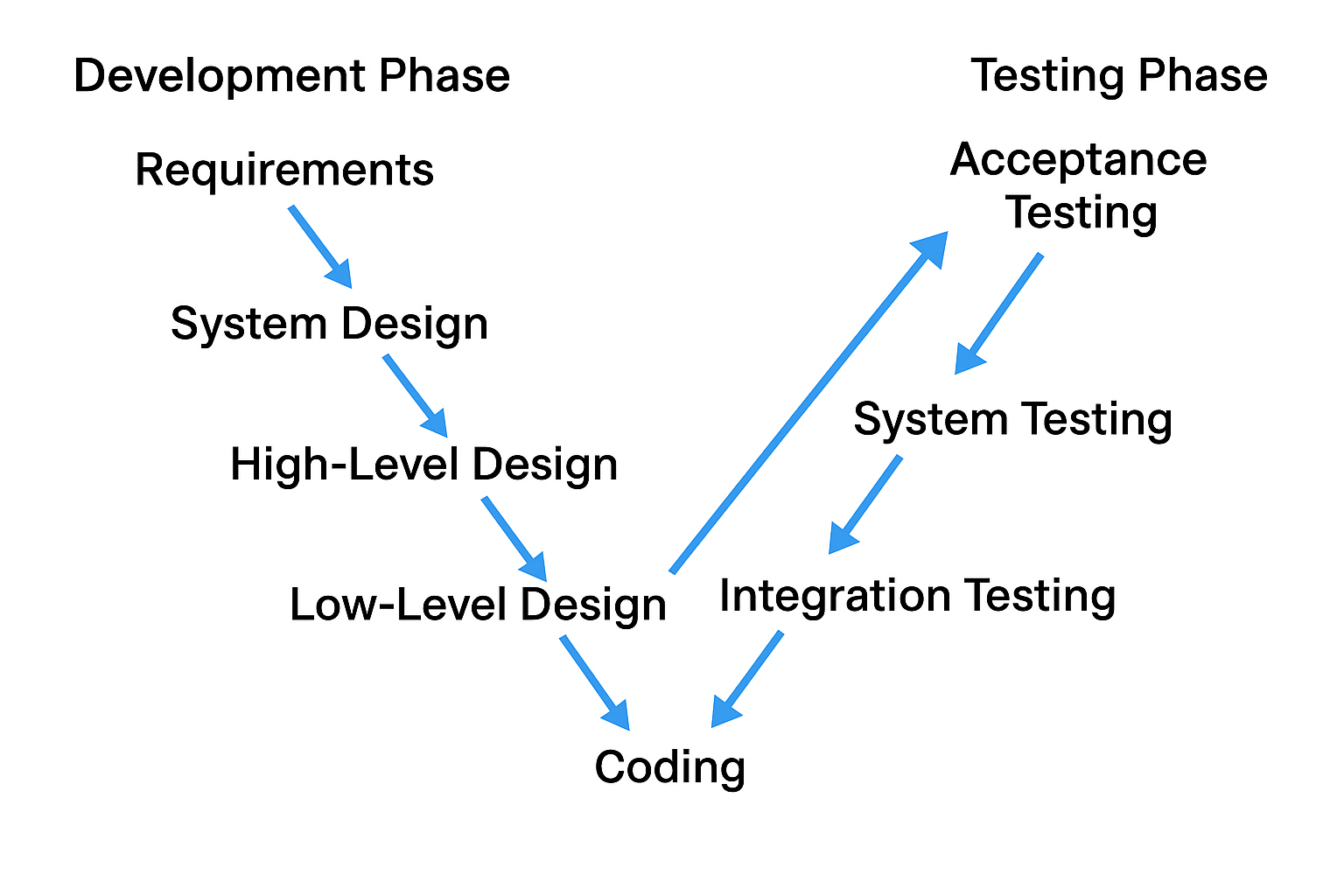There are multiple factors that will allow us to think about the Importance of Software testing as it is part of the Software development cycle. I tried to cover most of them. So basically Testing is a key part of building software because it ensures the final product works well, meets user needs, and is safe to use. Here’s why testing is so important in the software development process:
1. Catching Problems Early:
Starting tests from the beginning, during planning and design, helps identify issues before they become bigger problems. With early testing, especially in quick-paced methods like Agile, teams can spot and solve problems faster, saving time and money. This will avoid panic situations when software is in production and gets the bug.
2. Ensuring Requirements Are Met:
Testing regularly checks that the software is being built according to its original requirements. This makes sure there’s no misunderstanding or deviation from what the software should do, which helps keep the project on track. This allows to validation of software against the requirements defined.
3. Keeping Quality High:
Testing, whether automated or done manually, is how teams confirm the software is reliable, user-friendly, and ready for launch. This consistent focus on quality makes for a better end product. Quality is important in all areas, as unless the software has good quality customers won’t happy.
4. Checking Performance and Scalability:
Performance testing ensures the software can handle different usage scenarios and larger user loads. This is especially important for applications that will have high traffic or many users at once. Not only software testing is important but it also needs to be tested for performance and scalability. Software should work with minimum load as well as larger user loads as defined in requirements. This ensures the performance and scalability of the software.
5. Security Checks:
Security testing finds any areas where the software might be vulnerable, ensuring it’s safe from data breaches or cyberattacks. This is crucial for protecting user data and building trust with users. This is the most important testing that needs to be done for the security of software as well as data security.
6. Improving User Satisfaction:
Testing removes major bugs, so users get a smooth experience without glitches or crashes. A high-quality, stable product means happier users who are more likely to stick with the software. By doing all these types of testing we can achieve the goal towards user satisfaction.
7. Supporting Maintenance and Updates:
Testing doesn’t stop at launch; it’s also crucial for updates. Tests for new features or changes confirm that these updates don’t break other parts of the software, keeping it reliable over time. Whenever there is a Change request from the customer or any bug-found introduction then need to provide a new update of software At that time also need to provide software updates for the same.
By making testing part of every stage in the development process, teams can deliver software that’s reliable, safe and meets expectations. This ongoing testing model is essential in modern development methods like Agile and DevOps, where quality is a constant focus.
Now let’s see what can happen if we do not consider the Importance of Software testing in the software development lifecycle
If testing isn’t prioritized during software development, a lot of issues can arise that impact both the final product and the process itself. Here’s what could happen:
1. More Bugs Show Up Later:
When testing isn’t done regularly, bugs can go undetected until the end of development—or worse, after the software is released. This can lead to some major functionality problems that would have been easier to catch and fix earlier.
2. Fixing Problems Gets Expensive:
Bugs that are caught after launch are much more expensive to fix than those caught early. It often requires extra resources and can disrupt the workflow, leading to additional costs and, potentially, unhappy users.
3. Lower Quality and Performance:
Testing makes sure software is reliable and works well. Without it, users might experience crashes, slow performance, or even security issues, which can hurt the product’s reputation and drive users away.
4. Poor User Experience:
When software doesn’t go through proper testing, users can encounter issues that lead to frustration and dissatisfaction. This can result in a drop in engagement, and you might lose customers or users over time.
5. Extended Development Time:
Not testing early can seem like a time-saver, but it often leads to delays in the long run. Bugs that surface later require more time and effort to fix, which slows down the entire development process.
6. Increased Security Risks:
Skipping security testing can leave software vulnerable to cyberattacks, leading to privacy breaches, legal trouble, and a loss of user trust. Recovering from a security breach can be both financially and reputationally costly.
7. Future Updates Become Harder:
Software that hasn’t been thoroughly tested can be challenging to update without introducing new issues. This makes it tough to add new features or keep the software optimized in the future.
In short, while skipping testing might save time initially, it can create more complications and costs in the long run. Consistent testing throughout development keeps things running smoothly, ensuring you end up with a reliable, high-quality product.



